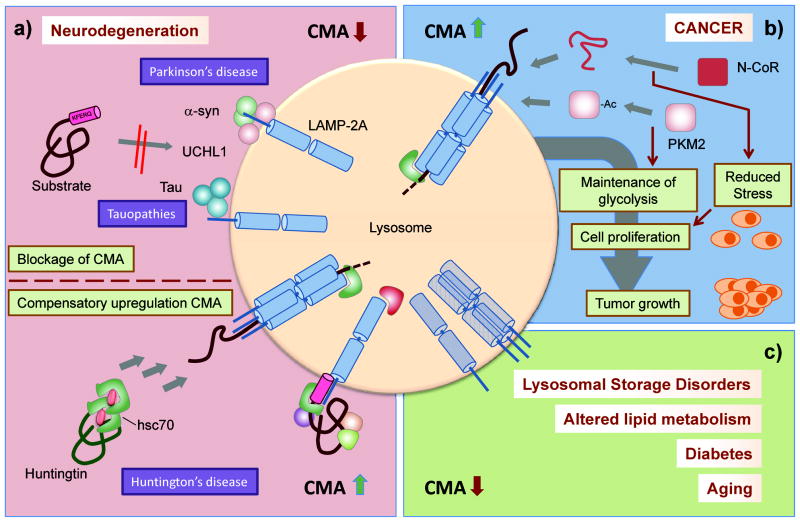Figure 3.
Pathology of CMA. a) Top: CMA is primarily compromised in some neurodegenerative diseases due to direct blockage of the translocation machinery by the pathogenic proteins. Bottom: Upregulation of CMA activity in Huntington’s disease compensates for the blockage in other degradative pathways and has been utilized for artificial targeting of the toxic protein. b) Cancer cells depend on CMA to sustain cellular proliferation and tumor growth. Continuous CMA activation maintains glycolytic activity and reduces stress in cancer cells. c) CMA activity is compromised in disorders that compromise lysosomal function and in metabolic diseases such as those related to alterations in lipid metabolism and diabetes. CMA activity also decreases with age.

